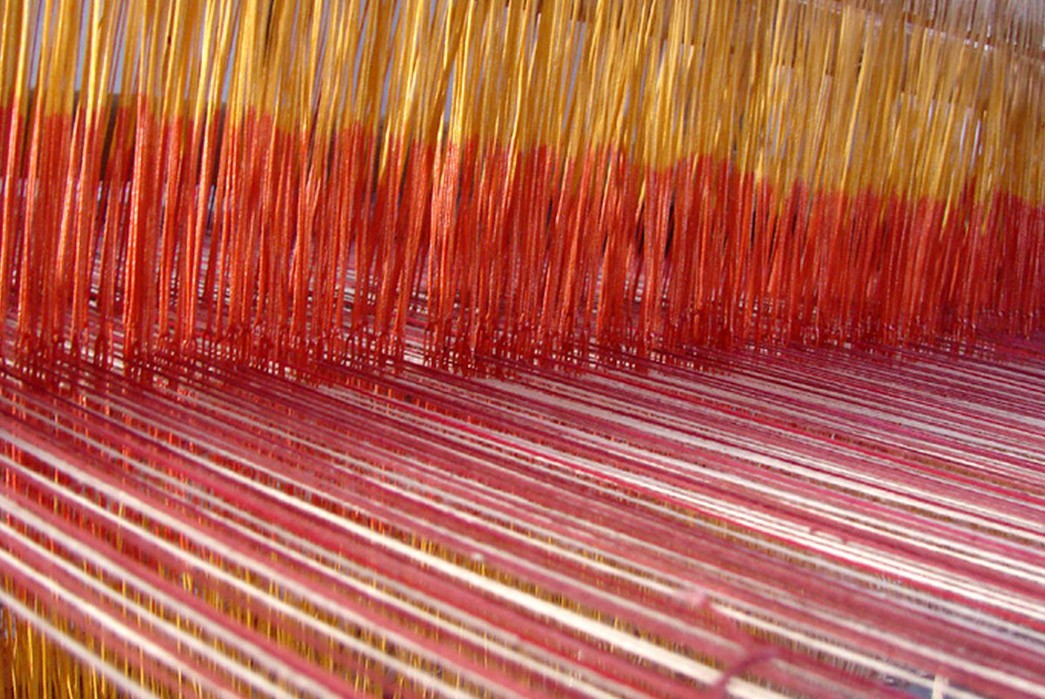You’re probably familiar with phrases like ‘mass-production’ and ‘second-rate’, and it’s not entirely surprising if they spring to mind when you think about clothes made in South Asia. Thanks to the explosion of fast fashion and offshoring in the last four decades, garment industries in India and surrounding countries have been somewhat vilified, appearing to be dominated by exploitation in the name of lower labor costs, quicker lead times and higher quantities.
It’s easy to let your judgment be clouded by these relatively recent headlines, but make no mistake – India’s fashion credentials are as rich and expansive as they come, so we couldn’t think of a better place to start for the first in our series of ‘Country of Origin’ primers.
We’ll explore its history, specialties and current state in this piece, so that the next time you come to buy a garment that was made in India, you’ll do so with a much deeper understanding of what that really means.
History
Early Textiles
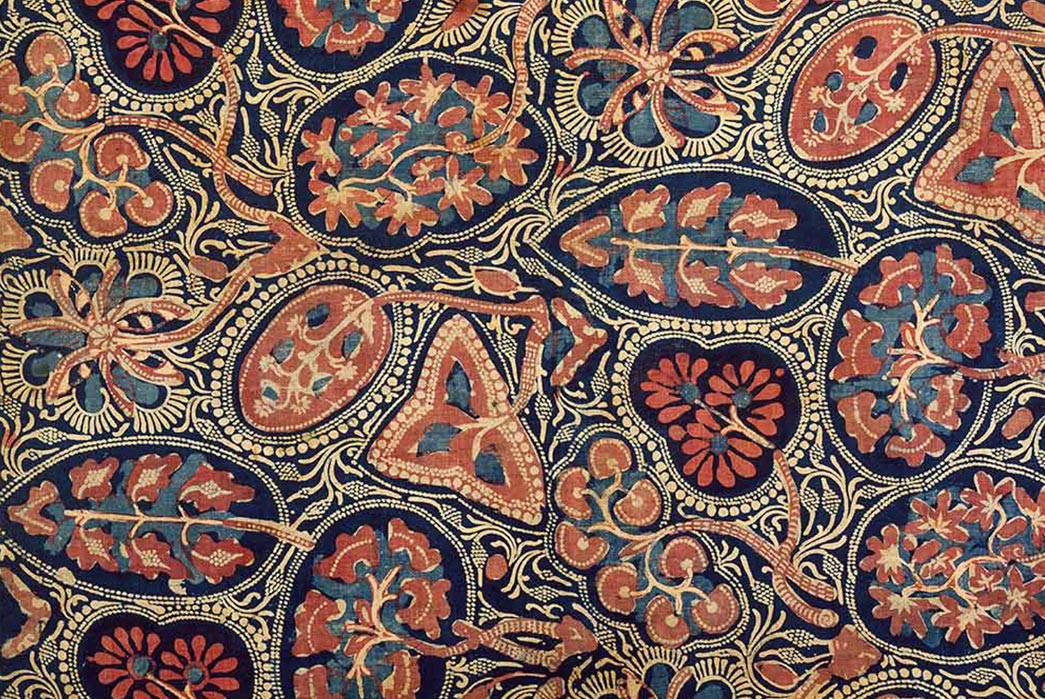
Block-printed and dyed cotton from Gujarat, India – about 1340-1380. Image via Victoria and Albert Museum, London.
Many of India’s folk tales and ancient sacred texts talk vividly of garments and cloth, which shows just how crucial textiles have been to the country’s identity throughout history. Embroidered clothes are present in artifacts from eras as early as the 3rd century BCE, and there’s evidence that it was exporting cloth more than four thousand years ago. Some of the earliest documented textiles from the region include homespun cotton, block-printed materials and brocade.
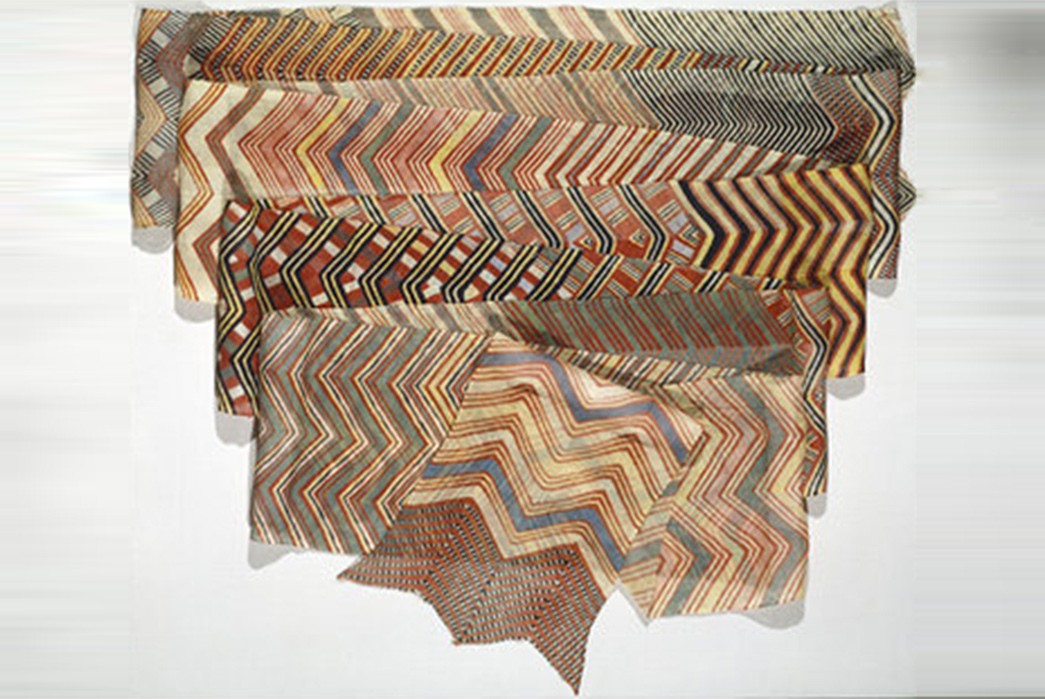
Tie-dyed turban fabric from Jaipur, 1862. Image via Victoria and Albert Museum, London
Though India has exported fabrics for thousands of years, they only accounted for a small portion of trade until the 18th and 19th centuries, when piece goods and woven cloth (often featuring surface decoration) were shipping in large quantities to much of Europe. At this point in time, India’s textile capabilities were some of the most technically advanced in the world. Significantly, in the mid-1800s, 12 mills opened in the region, marking the dawn of India’s factory-produced textile industry.
British Colonialism And The Indian Fashion Industry
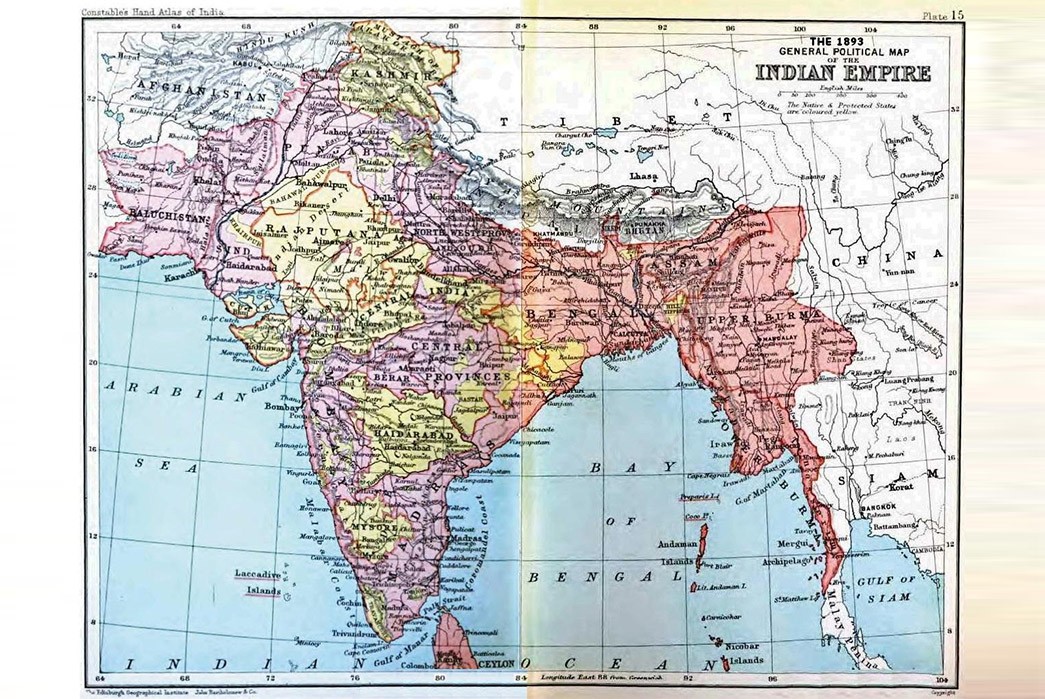
“Political Map of the Indian Empire, 1893”. Image via Wikipedia/ Constable’s Hand Atlas of India
The face of India’s textile manufacturing changed drastically in the era of British colonialism. Britain began to export its own machine-made yarns and cloth to India in huge quantities, realizing that if it hiked up tariffs on Indian imports then its own market would prosper.
This led to the downfall of India’s industry, diminishing its culture of artisanal cloth and leaving many unemployed and in dire circumstances. As well, many of the prints and techniques pioneered by Indian craftspeople could now be replicated with machinery cheaply elsewhere. Garments worn in the region were also affected by the occupation as many styles took on a western influence.
In the early 1900s, nationalist leader Mahatma (Mohandas) Gandhi suggested followers reject British goods and, in an act of self-reliance, spin and weave khadi fabric themselves at home. The cotton material swiftly became a symbol of resistance and is still strongly associated with this period.
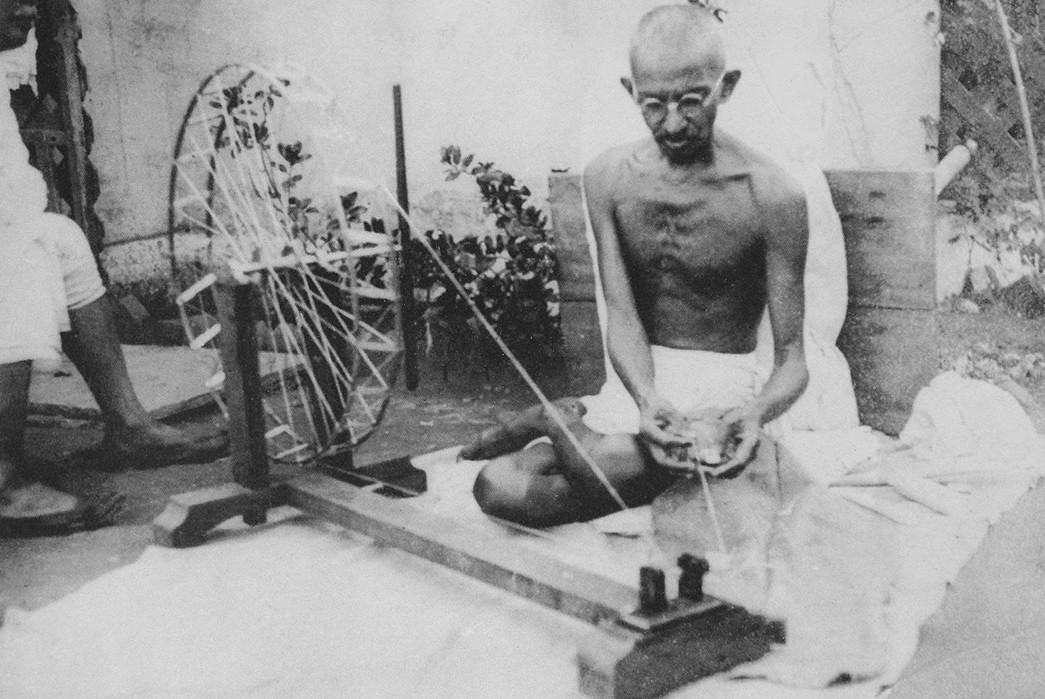
Mahatma Gandhi spins yarn in the late 1940s. Image via: gandhiserve.org / WikiCommons
Textiles In Independent India
The textile industry needed urgent repairs by the time India finally gained independence in 1947. As the nation reclaimed its identity, the government worked to modernize and industrialize manufacturing. It also created numerous organizations to ensure the longevity of longstanding handwork and crafts.
A burst of creativity spread across India’s fashion industry in the 1960s and ‘70s, while at the same time, trends in many western countries adopted motifs, fabrics and garments associated with the region. Some luxury fashion designers put ‘Indian-inspired’ designs on runways in Paris, London and New York, thus exoticizing them and, in many ways, continuing colonialist behavior.
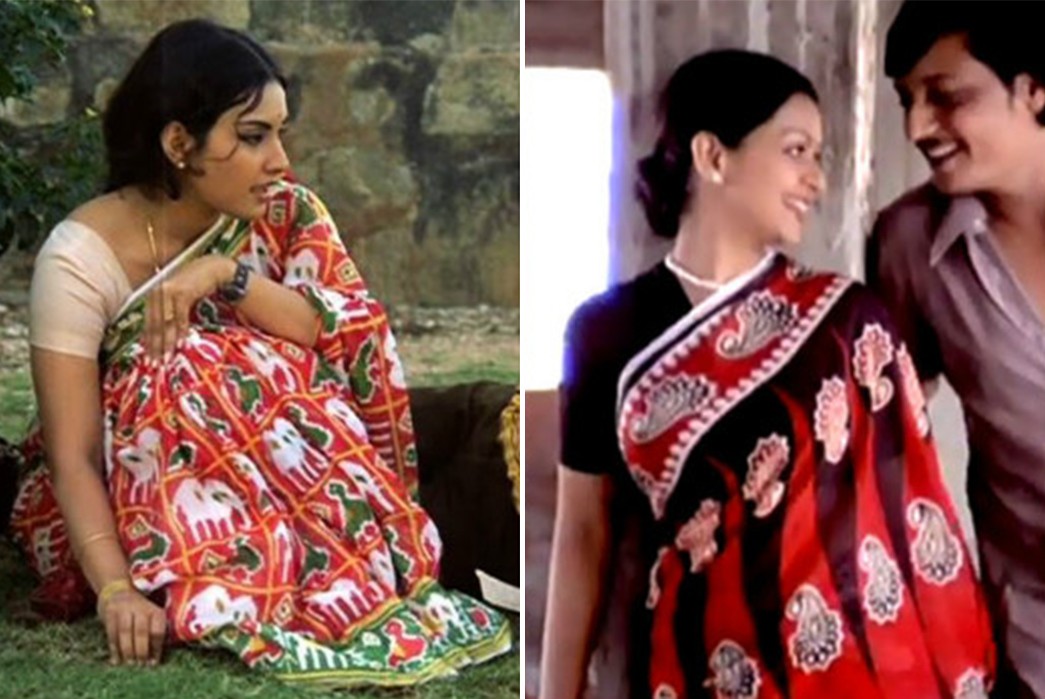
Women wearing saris during the 1970s and ‘80s. Image via Stand of Sil
This might now be considered cultural appropriation, but it’s important to understand just how much of our lexicon and closets are informed by India. Pajamas, for instance, originated in the subcontinent as loose drawstring trousers and were, as you might have already guessed, adopted by British colonialists.
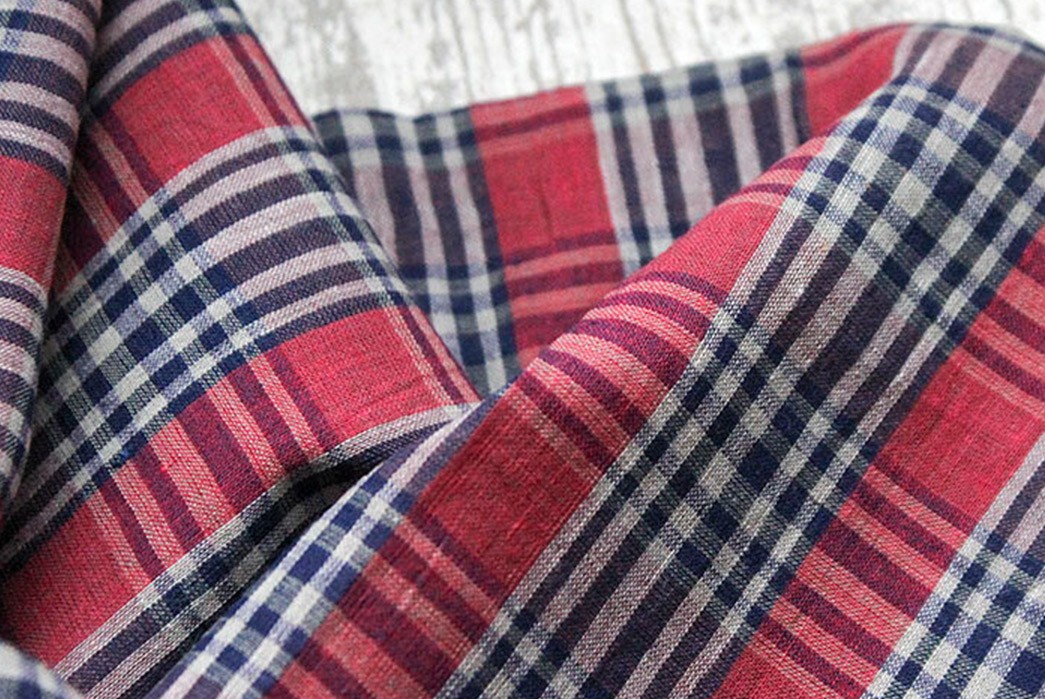
Madras fabric hand-loomed in India. Image via Cloth House
Similarly, bandanas can be attributed to the region, and then there’s gingham, a checked fabric that is believed to have been exported to Europe in the 1600s (although there’s some contention about the date). You’ll likely be familiar with madras fabric, and might remember this piece that we published on its history a few years ago.
Regional Specialists
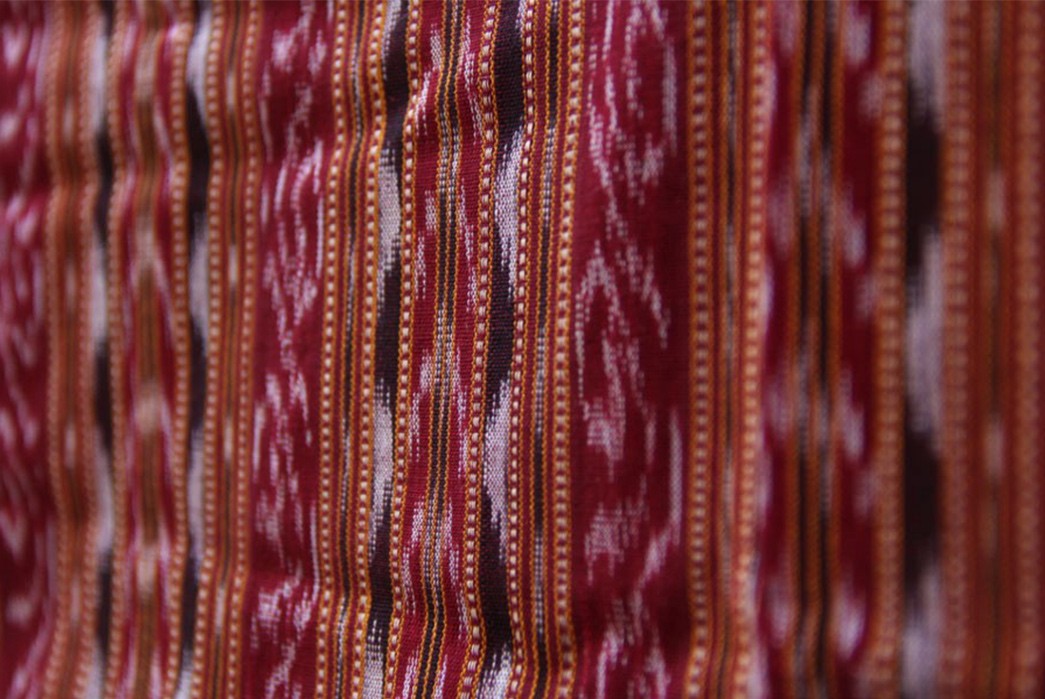
Ikat fabrics are often used to create Pochampally saris in Telangana state. Image via Noopur Shalini
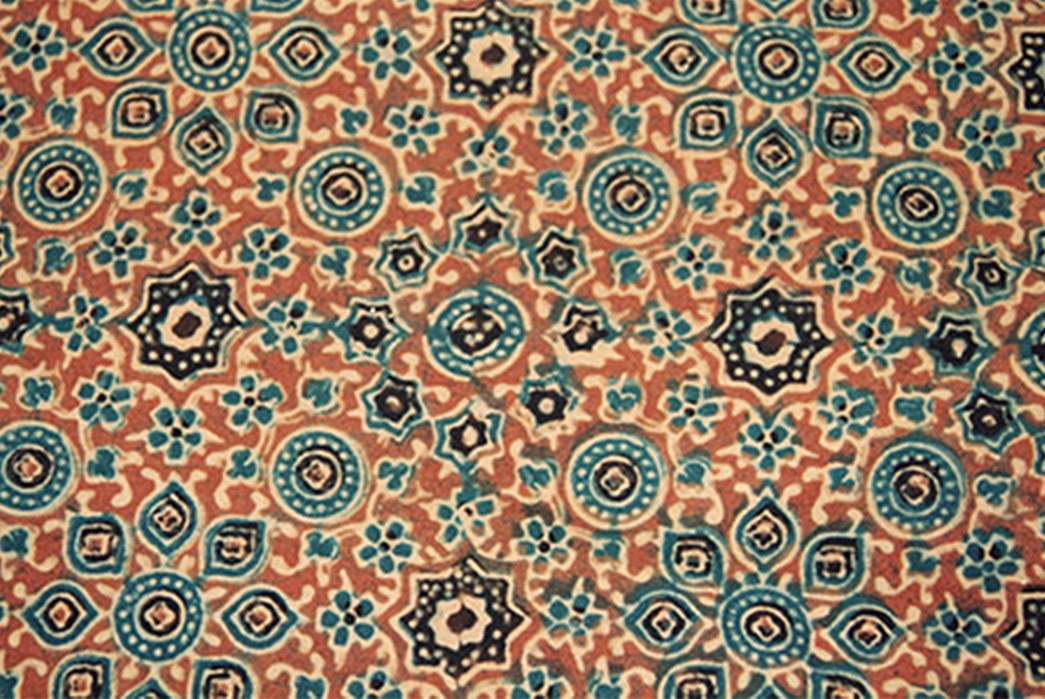
Ajrakh cloth from Kutch, Gujarat. Image via: Strand of Silk
Many areas in India are celebrated for their textile specialties – across centuries, they have perfected dyeing, weaving, printing and embellishment techniques according to locally available resources.
Southeast India, for instance, is known for vibrant red dyes, while Assam, in the northeast, is renowned for silks. Chintz, a printed fabric often decorated with flowers and widely used in fashion today, originated as a laborious hand-painted material in Hyderabad in the 16th century. Kashmir is famed for its soft woolen and cashmere shawls and is perhaps one of the most globally well-known areas.
Gujarat, meanwhile, has long been a center for weaving, and there’s still a vast network of textile craftspeople who specialize in everything from saris to Ajrakh – a resist-dyed textile using indigo and madder, which you may remember from our Pakistani-made CO-OP Ajrak Bandana.
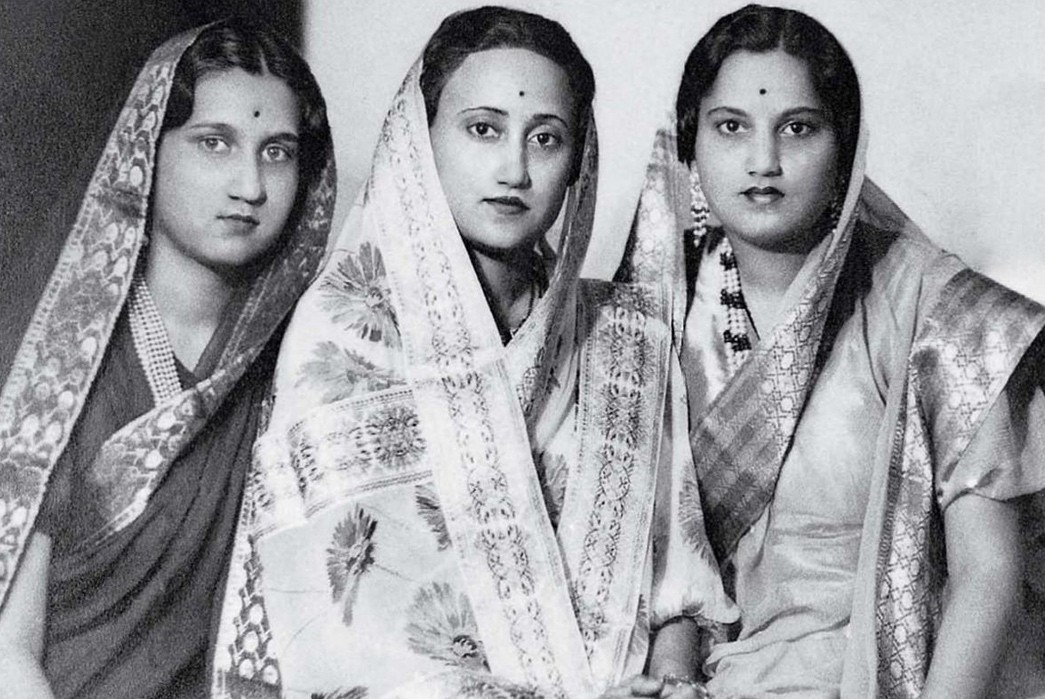
Women photographed in saris in 1912. Image via: WikiCommons
With a huge availability of homegrown cotton, Indian manufacturers have rarely had to look outside the region to source fibers for some of its most popular garments, such as the shalwar kameez, dhoti and sari (among many other styles).
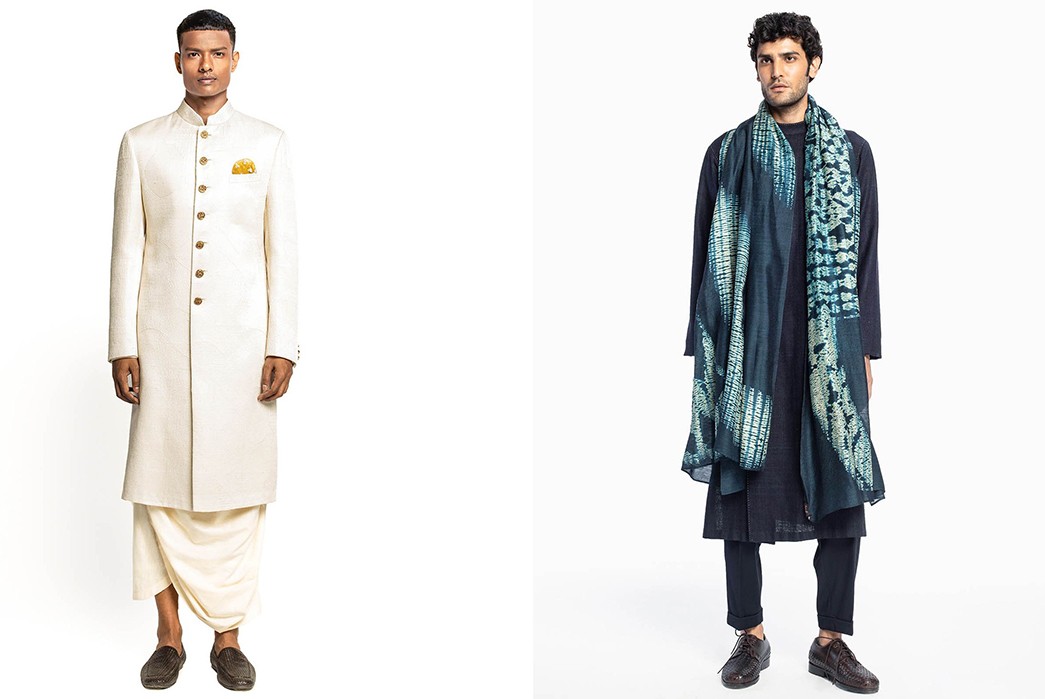
Sherwani set (right) and kurta set (left) by Divyam Mehta. Images via: Ogaan
India’s Textile Industry Today
Stats and Geography
Totaling 2% of India’s GDP and 12% of its export earnings, the modern textile and apparel industry is an ever-expanding global leader. In the last two decades, an influx of investment and technology has helped it grow steadily.
A lot of garment manufacturing is now centered around hubs in Delhi NCR, Bangalore and Tirupur, as well as Mumbai, Kolkata, Bangalore and Hyderabad. In recent years, many factories have relocated from urban areas to rural spots where labor and real estate costs are lower. This, in turn, has contributed to a trend for inter-state migrant workers.
Exports
Cotton, silk, and wool are the biggest raw fiber exports – the former accounts for 25% of the world’s production, meaning that India is the largest cotton producer and second-largest exporter after China. A number of organizations such as the Better Cotton Initiative have been working to improve aspects of cotton farming in the country, and special tax-free allowances are afforded on cotton garments made for export. Natural indigo is also still farmed in the region.
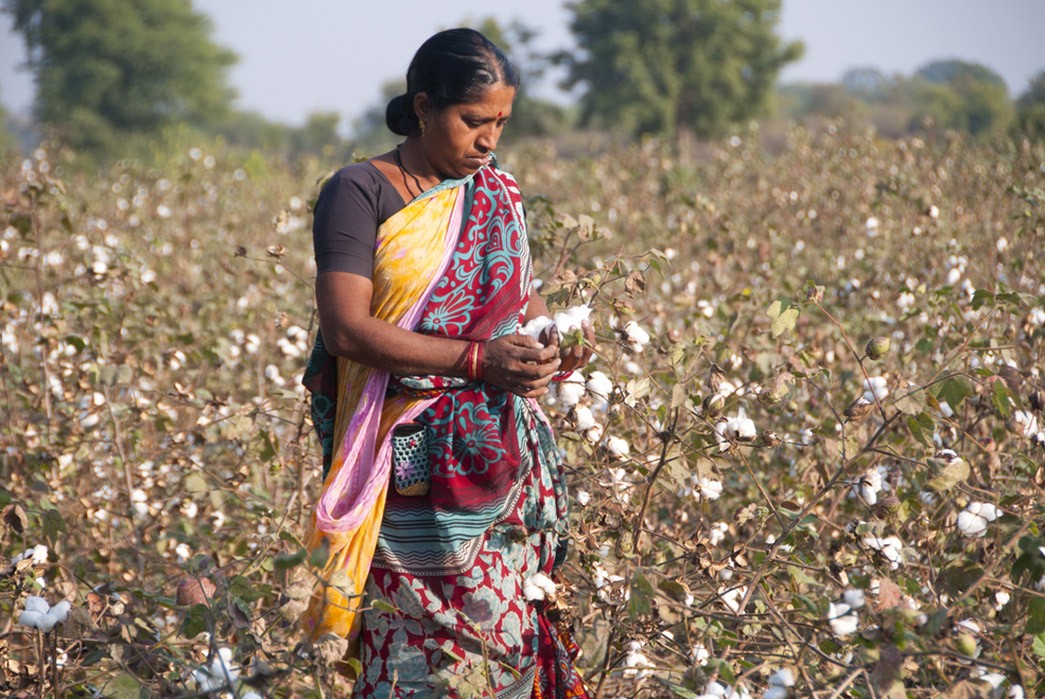
A woman collects cotton in India. Image via: Invest India
Jute has also been a fixture in India’s textile history and it remains a global authority on production. The natural fiber’s popularity declined over the last few decades but wide-ranging bans on plastic bags have prompted an increase in production of late.
As we mentioned earlier, handmade khadi cloth is still popular in and outside of India, and is an important source of employment for many around the country.
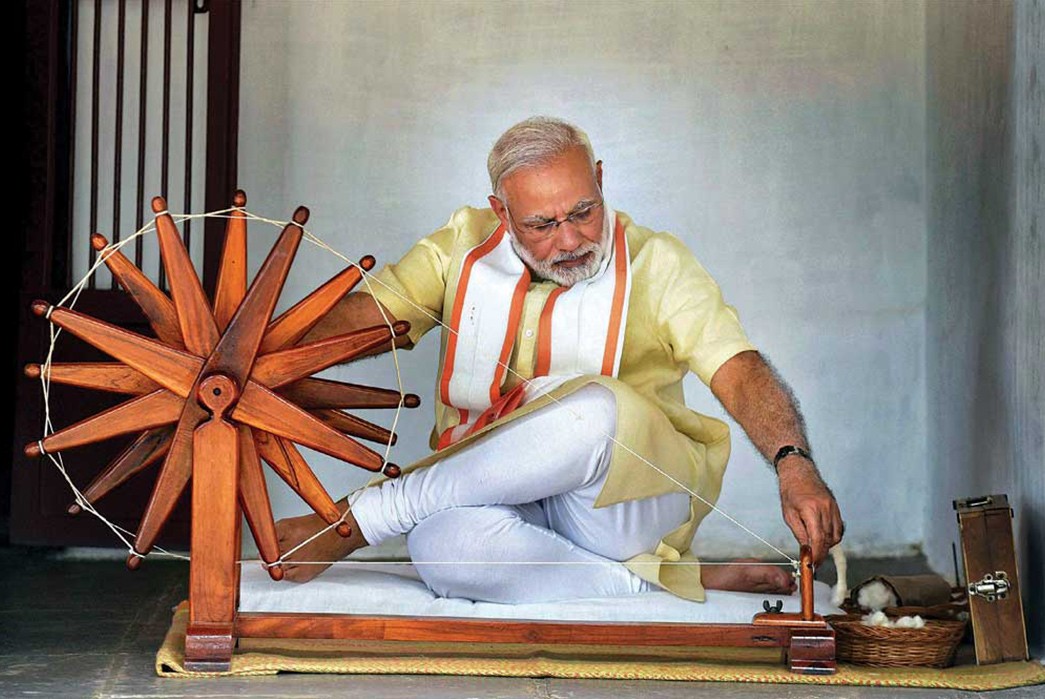
A man spinning khadi in 2018. Image: Open The Magazine
Today, many western retailers look to India for elaborate embellishments like hand beading and embroidery, but since the modern perception of its produce is less favorable, they’re reluctant to publicize India as a country of origin. This, along with something of a colonialist hangover and the issues surrounding labor rights that you’ll read about in a minute (and probably have already learned about from the media), only serve to perpetuate negative perceptions of India’s textile and garment sector.
Labor In The Fashion Industry
The industry is third to agriculture and construction in generating employment, with around 45 million people employed directly and 60 million in allied industries. Painting a generalized picture of working conditions is challenging because they vary so much in different states and types of production.
It’s certainly true that labor rights aren’t as strong as they should be, and in 2019, the Fairwear Foundation identified two key risks present in the readymade garment factories that it surveyed. The first being a distinct lack of trade unions, and the second, an array of health and safety issues. These included everything from limited access to restrooms to physiological problems resulting from high production targets.
Wages
In 2020, Labor Behind the Label estimated that the average minimum wage of a garment worker in India is around US$167 (less than half of the $401 suggested living wage). There’s a lot of evidence to show that in some areas, many workers earn even less than that, are often paid late and forced to work long hours as overtime.
Laws and Protections
Labor legislation was laid out in the Constitution of India (1950), but it’s by no means straightforward. Both central and state governments have the power to legislate around employment law, resulting in a web of complexities that is ripe for exploitation.
Despite laws prohibiting gender discrimination, child labor, unfair dismissal, forced labor and violence, they’re still prevalent in readymade garment factories across India and occur even when said facilities are audited by governing bodies. As well, grievances often go under the radar because taking them through the legal system is a lengthy and costly process, and many workers are at risk of further difficulties (whether at home or in the workplace) if they do complain.
Another issue that contributes to exploitation is unauthorized subcontracting – this often happens when retailers who’ve placed orders with factories increase quantities unexpectedly or attempt to drive costs down. If the factory hasn’t got the capacity to accommodate the requests, then it might outsource production to an unknown manufacturer whose labor rights practices might not be up to scratch. Since much of this goes undiscovered, it’s hard to estimate the true scale of unauthorized subcontracting.
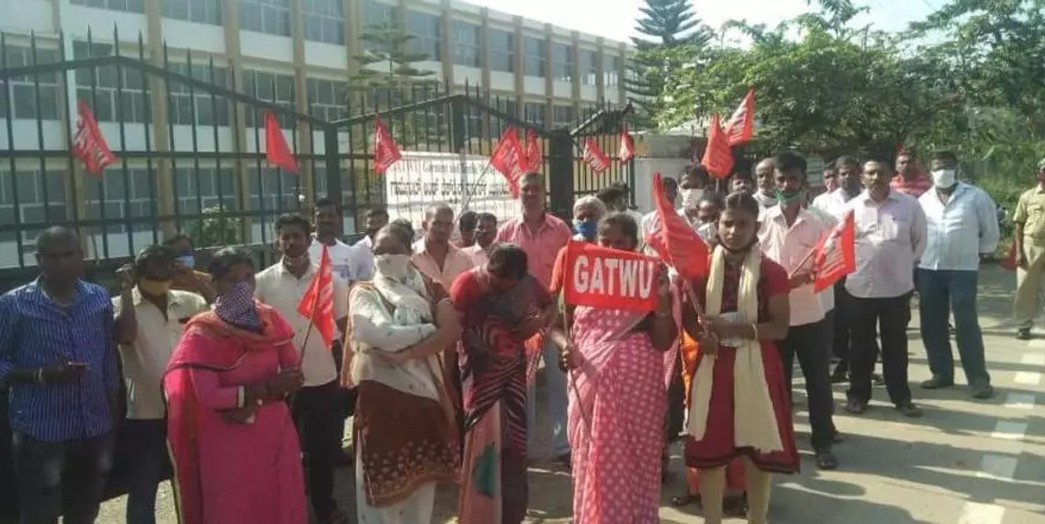
Garment workers in Hyderabad protest layoffs due to coronavirus-related factory closures. Image via News Click
We couldn’t touch on workers’ rights without considering the effect of the coronavirus pandemic on India’s textile industry. Many western retailers cancelled their orders with factories in South Asia, or at least pushed for heavy discounts, when clothing sales slowed due to national lockdowns.
Unfortunately, this loss of revenue and wave of factory closures was swiftly passed on to workers, who were dismissed and left with no income, quite literally overnight. The same NGOs and organizations that have long been campaigning for better labor rights in India (such as the Clean Clothes Campaign, Labor Behind the Label, Green America, and Fashion Revolution), called on retailers like Gap, Walmart and Levi’s to pay up. The latter paid in full, in case you were wondering.
Names To Know
Despite the overall condition of labor rights there are plenty of brands that produce in India consciously, and its fashion scene is thriving with creatives. Here are just a few:
Story mfg
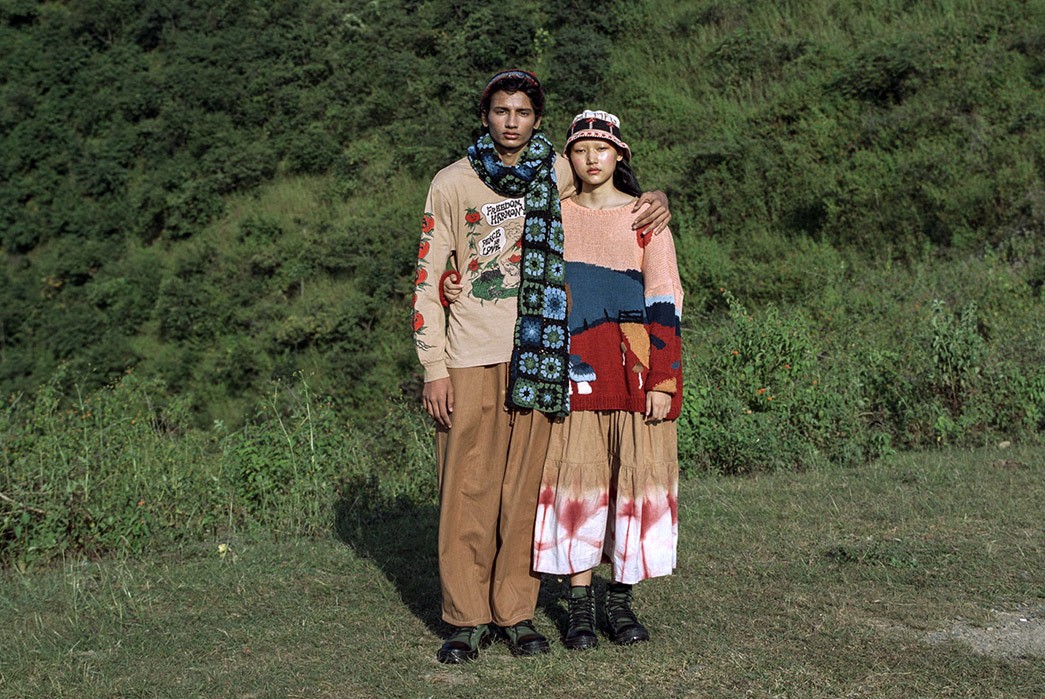
Story mfg.’s latest lookbook. Image via I-D
We’ve talked a little about this brand before, but in case you’re not familiar here’s the lowdown: Story mfg is a UK-based label founded in 2013 by husband and wife duo Katy and Saeed Al-Rubeyi with a mission to create low-impact clothes using mostly natural materials and dyes.
After a few seasons making their collections in England, the pair moved almost all production to India, where they partner with communities and artisans to create everything from hand-crocheted scarves to embroidered hoodies. They cite workwear and outdoor gear as main inspirations which, we think you’ll agree, are right up Heddels’ street. Check them out here.
Cord

Cord’s FW20 collection. Image via Cord
Created by Pranav Guglani and Neha Singh in 2015, Cord works with artisans across India and specializes in leatherwork, screen and block printing, hand embroidery and smocking. The brand strives to use natural and organic materials and prioritizes local sourcing. Its cotton-blend chinos and patterned bomber jackets are the kind you know you’ll be able to count on for years to come.
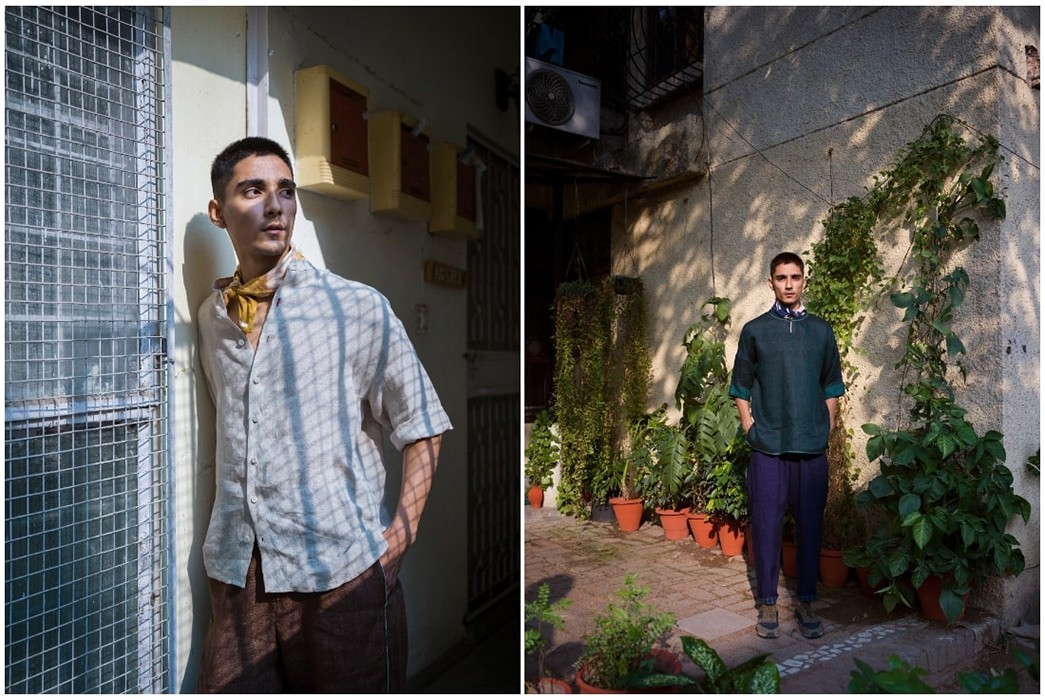
Eka Core Men. Image via Platform Magazine
Eka Core Men
Having grown up in a culture of craftsmanship and community, designer Rina Singh founded Eka Core Men with the intention to preserve artisanal processes and create trans-seasonal clothes. The brand’s offering is filled with recycled textiles, often linen, and features unusual selvedge details.
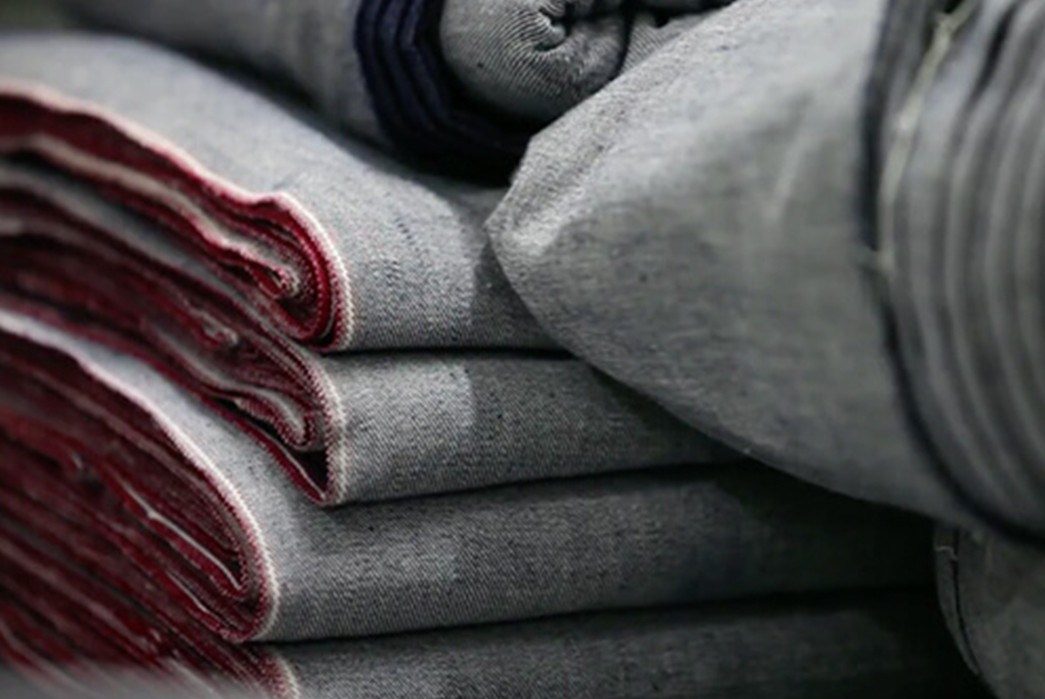
Arvind Limited’s khadi denim. Image via Arvind Limited
Arvind Mills
Where denim is concerned, it’s worth getting clued up on Arvind Limited. Founded in 1897 as a sari maker, the company expanded to become Arvind Mills in response to Mahatma Gandhi’s call for nationals to spin khadi, and later blossomed into India’s largest denim producer. By 1991, it was turning out 100 million meters of denim per year and in 1997, it won a contract to make Lee’s jeans. The company has worked hard to contribute to sustainable denim production in the last decade, and launched the world’s first khadi denim in 2015. “Each single yard of Khadi Denim is spun, dyed and woven by artisans carrying on centuries-old handloom traditions… no chemicals, no electricity, no high technology, no use of depletable resources”, the brand says.

